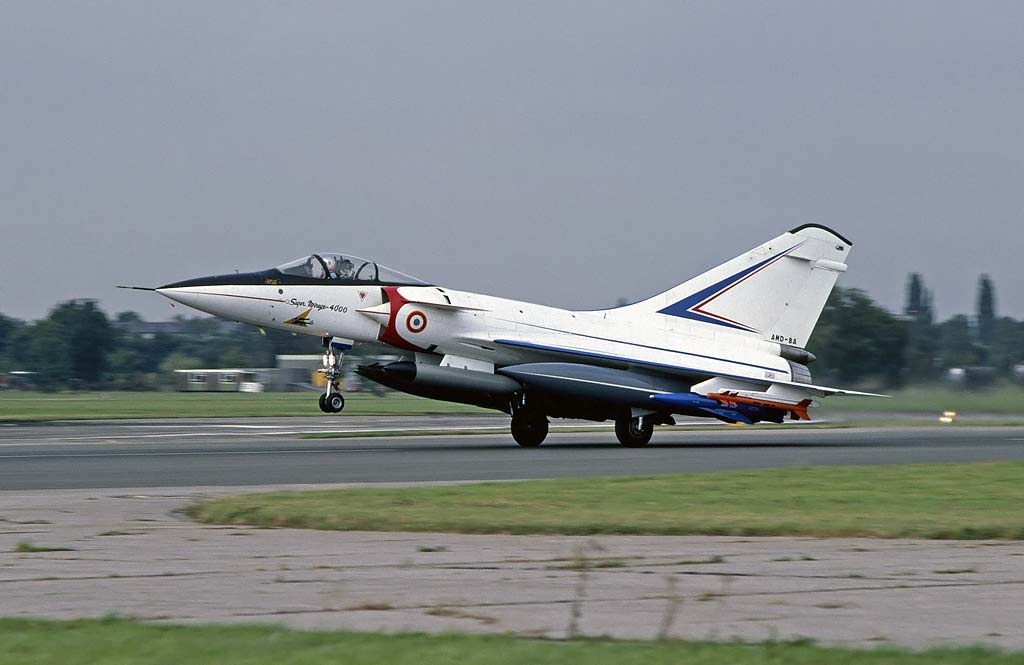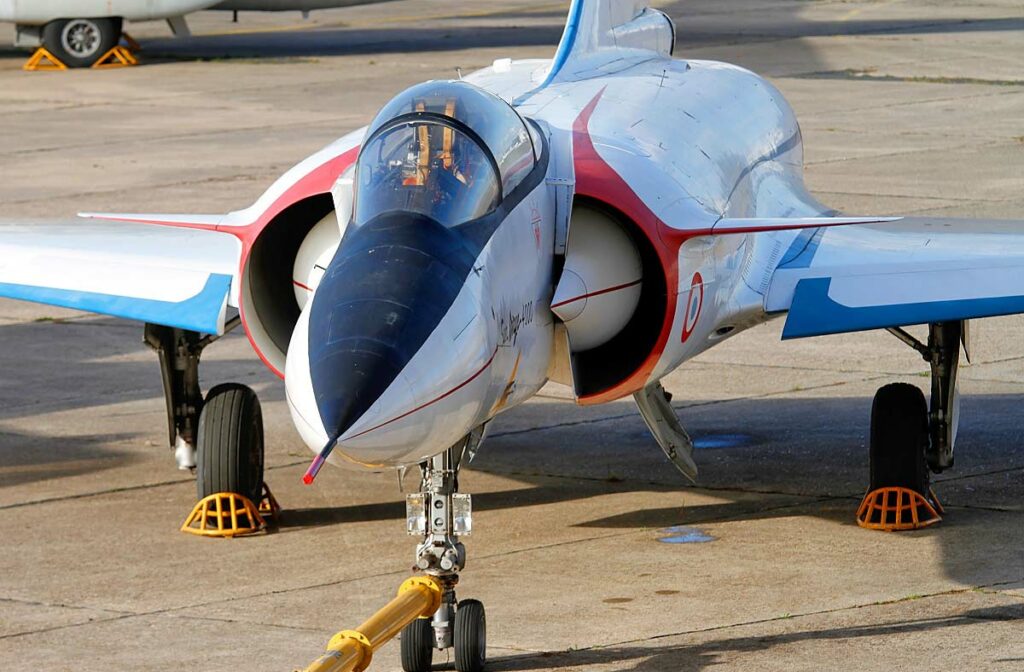A French prototype, twin-engine jet fighter, designed for superior air combat performance.
In brief
The Dassault Mirage 4000, also known as the Super Mirage 4000, was an ambitious expansion of the Mirage series, featuring a twin-engine design for enhanced power and capabilities. Equipped with two SNECMA M53-2 turbofan engines, the aircraft boasted an impressive thrust of 18,740 lb each, propelling it to speeds up to Mach 2.3 (approximately 1,519 mph, 2,445 km/h). With a combat weight of 35,494 lb, it maintained a high thrust-to-weight ratio. The Mirage 4000 could climb at an extraordinary rate of 60,000 ft/min and reach a service ceiling of 66,000 feet. Its design incorporated advanced avionics and a substantial armament capacity, capable of carrying a variety of missiles and bombs across multiple hardpoints.

History of the Development of the Dassault Mirage 4000
Developed by Dassault Aviation in the late 1970s as a private venture, the Mirage 4000 was intended to be a more powerful counterpart to the Mirage 2000, aimed at competing internationally with contemporary advanced fighters like the American F-15 Eagle. The aircraft was designed to excel in both interception and low-altitude penetration roles. It first took to the skies on March 9, 1979, at Istres, piloted by Jean-Marie Saget. Despite its technological prowess and impressive performance, the Mirage 4000 did not proceed beyond the prototype phase due to a lack of orders and shifting strategic priorities, which later favored multirole aircraft like the Rafale.
Design of the Dassault Mirage 4000
The Mirage 4000 was significantly larger than its predecessor, the Mirage 2000, measuring 61 feet in length with a wingspan of 39 feet. Its design incorporated a delta wing configuration and canard surfaces for enhanced stability and maneuverability. The airframe made extensive use of composite materials, which reduced weight and improved structural integrity. The internal fuel capacity was substantially greater than that of the Mirage 2000, extending its range and endurance, and it was equipped to support in-flight refueling, further amplifying its operational flexibility.
Performance of the Dassault Mirage 4000
The twin SNECMA M53-2 engines provided a total thrust of 37,480 lb, enabling the Mirage 4000 to achieve a maximum speed of Mach 2.3 and a range of approximately 1,243 miles. Its operational ceiling was around 65,617 feet, with a remarkable climb rate that demonstrated its potential as a high-altitude interceptor. However, despite these impressive specifications, the Mirage 4000’s market prospects were hampered by its specialization and the high costs associated with such advanced capabilities.
Variants of the Dassault Mirage 4000
The Mirage 4000 remained a single prototype; no production variants were developed. Although there were discussions and interest from potential international customers, such as Saudi Arabia and Iran, these did not result in actual sales.

Military Use and Combat of the Dassault Mirage 4000
The Mirage 4000 was never used in military combat as it did not enter production or secure any orders from the French Air Force or foreign buyers. Its development coincided with the transition towards versatile, multirole combat platforms, which ultimately led to the prioritization of the Rafale program over specialized interceptors like the Mirage 4000.
The Dassault Mirage 4000 was a technologically advanced prototype that demonstrated significant capabilities in speed, altitude, and armament. However, it arrived at a time when the shifting dynamics of military aviation favored multirole aircraft, leading to its unfortunate sidelining despite its potential. The Mirage 4000 remains a notable example of 1980s aviation technology and an interesting “what-if” in the history of military aircraft.
Back to the Fighter Jet section.